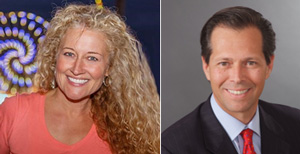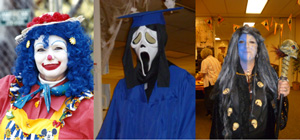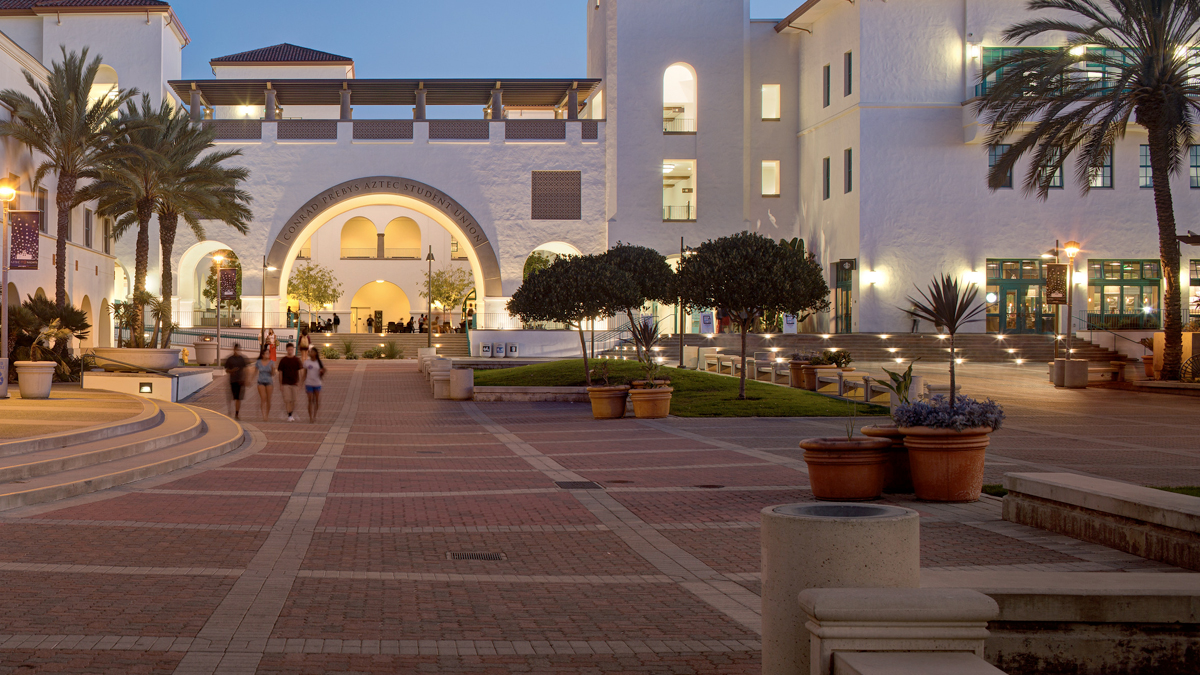The Business of Halloween
According to the National Retail Federation (NRF), U.S. consumers plan to spend a record $10.6 billion on Halloween candy, decorations, costumes and other holiday items.
By Suzanne Finch
 SDSU marketing lecturers Kristine Ehrich (left) and Miro Copic
SDSU marketing lecturers Kristine Ehrich (left) and Miro Copic
Marketing lecturers Miro Copic and Kristine Ehrich at the Fowler College of Business at San Diego State University discussed why Halloween is such a popular time of year with American consumers and the factors that influence their buying decisions.
1. Why are consumers spending more than ever on the holiday this year?
Copic: Consumers are looking for a degree of normalcy as the restrictions of the pandemic
have been removed. Interestingly, Halloween spending was flat at around $9 billion
from 2017-2019. In fact, spending dropped to $8.8 billion in 2019. Consumers are embracing
more ways to engage and be creative and Halloween lets consumers do both.
Ehrich: It seems people are seeking that return to routine after the pandemic. Last year at
this time, there was much more social distancing and masking. Although we still see
some of that now (required in many educational settings), there is less of it, and
people are celebrating with the first holiday of the fall season.
2. The NRF also noted 69% of consumers plan to celebrate the holiday, which is up from 65% last year. What accounts for the increasing popularity of Halloween in the U.S.?
Copic: This means that nearly 20 million additional consumers will be participating in some kind of Halloween activity. Coming out of the pandemic, consumers want to socialize with their neighbors, and encourage their kids to enjoy the holiday. Additionally, as more individuals return to the workplace, companies are embracing celebrating Halloween in the office again. It’s a way to enhance employee morale and involvement. Fundamentally, Halloween is fun.
3. Consumer spending on pet costumes have nearly doubled in the past five years. Why are more people dressing up their pets than ever before?
Copic: It’s an interesting phenomenon. Spending on pet costumes has increased 40% since before the pandemic and nearly 1-in-5 consumers plan to dress up their pets this Halloween. There are a few factors. First, pets are treated more and more as family members. Therefore, pets should take part in Halloween celebrations. Pet costumes can be fun and are a conversation starter. Second, as people delay marriage, more people are adopting pets and almost treating them as children — hence more pet costumes. Finally, marketers have seized on this trend by providing a wider range of costumes and more aggressively marketing pet costumes.
Ehrich: Expenditures on pet food, daycare, beds, and other pet items have increased substantially over the past few years. In addition, people are having fewer children and adopting more pets. (NOTE: I don't want to equate pets with children, but there are many who spend money on pets in a similar fashion). It’s also a little bit of a chicken or egg type of thing: Are retailers meeting the need of the consumer or creating the need by offering more pet products? For example, if I see that there are a multitude of costumes available for my pet, there is an increased probability that I’ll purchase one.
 Various costumes seen on the SDSU campus over the years
Various costumes seen on the SDSU campus over the years
4. As of early September, 70% of adults who plan to dress up for Halloween knew what their costumes were going to be. What drives people’s choice of costume?
Copic: Consumers are always trying to figure out something new to wear for Halloween. Clever costumes abound but adults tend to fall back to traditional Halloween costumes like witches, vampires, ghosts, and pirates. It’s how the consumer wears the costume and the additional detail they add which makes the costume compelling. It’s easier for consumers to envision an outcome and there are more accessories for these core costumes which makes them the “go to” standard for most Halloween revelers.
Ehrich: Costume choices seem to depend on a combination of tradition (witches, vampires, ghosts, etc.) and pop culture trends. In election years, political costumes are big sellers. Current celebrities and sports stars are also highly impactful in consumer choices. There’s lots of supply chain issues that can influence what people choose, as well. Spirit Halloween and other retailers can shape our costume choices by the offerings they present to us. They study what's trending in pop culture early in the year and try to get those costumes ready for this season.
5. According to one survey, 23% of American adults said Halloween was their favorite holiday with another 40% saying it was “one of their favorites.” Why do Americans seem to like Halloween so much?
Copic: As Halloween evolved, it combined the traditions of many cultures that were brought to the U.S. It had more religious overtones in the 18th and 19th centuries, and it wasn’t until the early 1950’s that Halloween morphed into the holiday we know today — where kids go trick-or-treating and both kids and adults have Halloween costume parties. Halloween is much more secular and it is a very different holiday than more patriotic holidays like July 4th or Memorial Day, or family/religious holidays like Thanksgiving, Christmas and Easter. It appeals to many consumers because it allows them to express themselves and play another role. But Halloween is also a very polarizing holiday since the same survey shows that nearly 20% of consumers don’t like Halloween and 10% refuse to celebrate it at all. But those that enjoy Halloween celebrate with gusto.

